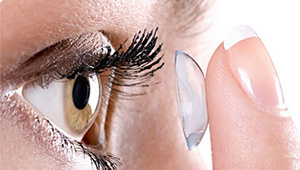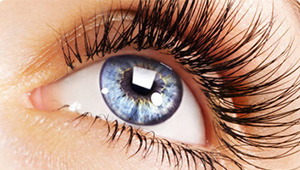Воздействие децентрации зоны лечения на рост осевой длины после ортокератологии
Авторы: Shuxian Zhang, Hui Zhang, Lihua Li, Xiaoyan Yang, Shumao Li, Xuan Li
Источник: https://pubmed.ncbi.nlm.nih.gov/36340764/
Аннотация
Цель: изучить влияние децентрации зоны лечения (ЗЛ) на осевой прирост глаза (ОПГ) у подростков после ношения ортокератологических линз (ОК).
Материалы и методы: это ретроспективное клиническое исследование насчитывает 251 подростка, которым с января 2018 года по декабрь 2018 года в Клиническом колледже офтальмологии Тяньцзиньского медицинского университета (Тяньцзинь, Китай) были назначены линзы ОК и которые непрерывно носили данные линзы более 12 месяцев. Возраст пациентов составлял 8-15 лет, сферический эквивалент (СЭ): от -1,00 до -5,00 диоптрий (D) и астигматизм ≤ 1,50 D. Топографию роговицы записывали в начале наблюдения и через 1, 6 и 12 месяцев пользование ОК, а осевую длину (ОД) регистрировали на начальном этапе и при обследовании через 6 и 12 месяцев пользования ОК. Для статистического анализа были использованы результаты обследования правого глаза.
Результаты. По результатам обследования через 1 месяц использования ОК пациенты в зависимости от выявленной величины децентрации ЗЛ были разделены на три группы: 56 случаев в лёгкой форме (<0,5 мм), 110 в умеренной (0,5-1,0 мм) и в 85 была отчетливая децентрация (1,0 мм). Через 6 и 12 месяцев пользования ОК была обнаружена значительная разница в ОПГ между тремя группами (F = 10,223, P < 0,001; F = 13,380, P < 0,001, соответственно). Среди них ОПГ при лёгкой децентрации через 6 и 12 месяцев пользования ОК был значительно выше, чем в двух других группах. Многофакторный линейный регрессионный анализ показал, что возраст, базовый СЭ и 1-месячная децентрация связана с 12-месячным ОПГ (P < 0,001, P < 0,001 и P = 0,001 соответственно).
Вывод: децентрация ЗЛ линзы ОК вызвала рост ОД у подростков, то есть чем больше децентрация, тем меньше влияние на ОПГ.
References
- Applegate R. A., Donnelly W. J., III, Marsack J. D., Koenig D. E., Pesudovs K. (2007). Three-dimensional relationship between high-order root-mean-square wavefront error, pupil diameter, and aging. J. Opt. Soc. Am. A Opt. Image Sci. Vis. 24 578–587. 10.1364/josaa.24.000578 - DOI - PMC - PubMed
- Bullimore M. A., Brennan N. A. (2019). Myopia control: Why each diopter matters. Optom. Vis. Sci. 96 463–465. 10.1097/OPX.0000000000001367 - DOI - PubMed
- Charman W. N., Mountford J., Atchison D. A., Markwell E. L. (2006). Peripheral refraction in orthokeratology patients. Optom. Vis. Sci. 83 641–648. 10.1097/opx.0000232840.66716.af- DOI - PubMed
- Chen J., Huang W., Zhu R., Jiang J., Li Y. (2018). Influence of overnight orthokeratology lens fitting decentration on corneal topography reshaping. Eye Vis. 5:5. 10.1186/s40662-018-0100-7 - DOI - PMC - PubMed
- Chen M., Wu A., Zhang L., Wang W., Chen X., Yu X., et al. (2018). The increasing prevalence of Myopia and High Myopia among high school students in Fenghua city, eastern China: A 15-year population-based survey. BMC Ophthalmol. 18:159. 10.1186/s12886-018-0829-8 - DOI - PMC - PubMed
- Chen R., Chen Y., Lipson M., Kang P., Lian H., Zhao Y., et al. (2020). The Effect of Treatment Zone Decentration on Myopic Progression during Or-thokeratology. Curr. Eye Res. 45 645–651. 10.1080/02713683.2019.1673438 - DOI - PubMed
- Chen Z., Niu L., Xue F., Qu X., Zhou Z., Zhou X., et al. (2012). Impact of pupil diameter on axial growth in orthokeratology. Optom. Vis. Sci. 89 1636–1640. 10.1097/OPX.0b013e31826c1831 - DOI - PubMed
- Chen Z., Xue F., Zhou J., Qu X., Zhou X., Shanghai O., et al. (2017). Prediction of Orthokeratology Lens Decentration with Corneal Elevation. Optom. Vis. Sci. 94 903–907. 10.1097/OPX.0000000000001109 - DOI - PubMed
- Cho P., Cheung S. W., Edwards M. (2005). The longitudinal orthokeratology research in children (LORIC) in Hong Kong: A pilot study on refractive changes and myopic control. Curr. Eye Res. 30 71–80. 10.1080/02713680590907256 - DOI - PubMed
- Dong L., Kang Y. K., Li Y., Wei W. B., Jonas J. B. (2020). Prevalence and time trends of Myopia in children and adolescents in China: A systemic review and meta-analysis. Retina 40 399–411. 10.1097/IAE.0000000000002590 - DOI - PubMed
- Flitcroft D. I. (2012). The complex interactions of retinal, optical and environmental factors in Myopia aetiology. Prog. Retin. Eye Res. 31 622–660. 10.1016/j.preteyeres.2012.06.004 - DOI - PubMed
- Gislen A., Gustafsson J., Kroger R. H. (2008). The accommodative pupil responses of children and young adults at low and intermediate levels of ambient illumination. Vision Res. 48 989–993. 10.1016/j.visres.2008.01.022 - DOI - PubMed
- Gu T., Gong B., Lu D., Lin W., Li N., He Q., et al. (2019). Influence of corneal topographic parameters in the decentration of orthokeratology. Eye Contact Lens 45 372–376. 10.1097/ICL.0000000000000580 - DOI - PubMed
- Guo B., Wu H., Cheung S. W., Cho P. (2022). Manual and software-based measurements of treatment zone parameters and characteristics in children with slow and fast axial elongation in orthokeratology. Ophthalmic Physiol. Opt. 42 773–785. 10.1111/opo.12981 - DOI - PubMed
- Hiraoka T., Kakita T., Okamoto F., Oshika T. (2015). Influence of ocular wavefront aberrations on axial length elongation in myopic children treated with overnight orthokeratology. Ophthalmology 122 93–100. 10.1016/j.ophtha.2014.07.042 - DOI - PubMed
- Hiraoka T., Mihashi T., Okamoto C., Okamoto F., Hirohara Y., Oshika T. (2009). Influence of induced decentered orthokeratology lens on ocular higher-order wavefront aberrations and contrast sensitivity function. J. Cataract Refract. Surg. 35 1918–1926. 10.1016/j.jcrs.2009.06.018 - DOI - PubMed
- Holden B. A., Fricke T. R., Wilson D. A., Jong M., Naidoo K. S., Sankaridurg P., et al. (2016). Global prevalence of Myopia and High Myopia and temporal trends from 2000 through 2050. Ophthalmology 123 1036–1042. 10.1016/j.ophtha.2016.01.006 - DOI - PubMed
- Hu Y., Ding X., Guo X., Chen Y., Zhang J., He M. (2020). Association of Age at Myopia Onset With Risk of High Myopia in Adulthood in a 12-Year Follow-up of a Chinese Cohort. JAMA Ophthalmol. 138 1129–1134. 10.1001/jamaophthalmol.2020.3451 - DOI - PMC - PubMed
- Hu Y., Wen C., Li Z., Zhao W., Ding X., Yang X. (2019). Areal summed corneal power shift is an important determinant for axial length elongation in myopic children treated with overnight orthokeratology. Br. J. Ophthalmol. 103 1571–1575. 10.1136/bjophthalmol-2018-312933 - DOI - PubMed
- Jaisankar D., Liu Y., Kollbaum P., Jaskulski M., Gifford P., Suheimat M., et al. (2020). Nasal-temporal asymmetry in peripheral refraction with an aspheric Myopia control contact lens. Biomed. Opt. Express 11 7376–7394. 10.1364/BOE.406101 - DOI - PMC - PubMed
- Jiang F., Huang X., Xia H., Wang B., Lu F., Zhang B., et al. (2021). The spatial distribution of relative corneal refractive power shift and axial growth in myopic children: Orthokeratology versus multifocal contact lens. Front. Neurosci. 15:686932. 10.3389/fnins.2021.686932 - DOI - PMC - PubMed
- Jiang J., Lian L., Wang F., Zhou L., Zhang X., Song E. (2019). Comparison of toric and spherical orthokeratology lenses in patients with Astigmatism. J. Ophthalmol. 2019:4275269. 10.1155/2019/4275269 - DOI - PMC - PubMed
- Kakita T., Hiraoka T., Oshika T. (2011). Influence of overnight orthokeratology on axial elongation in childhood Myopia. Invest. Ophthalmol. Vis. Sci. 52 2170–2174. 10.1167/iovs.10-5485 - DOI - PubMed
- Kang P., Swarbrick H. (2016). New perspective on Myopia control with orthokeratology. Optom. Vis. Sci. 93 497–503. 10.1097/OPX.0000000000000826 - DOI - PubMed
- Lau J. K., Vincent S. J., Cheung S. W., Cho P. (2020b). The influence of orthokeratology compression factor on ocular higher-order aberrations. Clin. Exp. Optom. 103 123–128. 10.1111/cxo.12933 - DOI - PubMed
- Lau J. K., Vincent S. J., Cheung S. W., Cho P. (2020a). Higher-Order Aberrations and Axial Elongation in Myopic Children Treated With Orthokeratology. Invest. Ophthalmol. Vis. Sci. 61:22. 10.1167/iovs.61.2.22 - DOI - PMC - PubMed
- Lian Y., Shen M., Huang S., Yuan Y., Wang Y., Zhu D., et al. (2014). Corneal reshaping and wavefront aberrations during overnight orthokeratology. Eye Contact Lens 40 161–168. 10.1097/ICL.0000000000000031 - DOI - PubMed
- Lin W., Gu T., Bi H., Du B., Zhang B., Wei R. (2022). The treatment zone decentration and corneal refractive profile changes in children undergoing orthokeratology treatment. BMC Ophthalmol. 22:177. 10.1186/s12886-022-02396-w - DOI - PMC - PubMed
- Lin W., Li N., Gu T., Tang C., Liu G., Du B., et al. (2021). The treatment zone size and its decentration influence axial elongation in children with orthokeratology treatment. BMC Ophthalmol. 21:362. 10.1186/s12886-021-02123-x - DOI - PMC - PubMed
- Lin Z., Duarte-Toledo R., Manzanera S., Lan W., Artal P., Yang Z. (2020). Two-dimensional peripheral refraction and retinal image quality in orthokeratology lens wearers. Biomed. Opt. Express 11 3523–3533. 10.1364/BOE.397077 - DOI - PMC - PubMed
- Maseedupally V. K., Gifford P., Lum E., Naidu R., Sidawi D., Wang B., et al. (2016). Treatment Zone Decentration During Orthokeratology on Eyes with Corneal Toricity. Optom. Vis. Sci. 93 1101–1111. 10.1097/OPX.0000000000000896 - DOI - PubMed
- Mathur A., Atchison D. A. (2013). Peripheral refraction patterns out to large field angles. Optom. Vis. Sci. 90 140–147. 10.1097/OPX.0b013e31827f1583 - DOI - PubMed
- Nti A. N., Berntsen D. A. (2020). Optical changes and visual performance with orthokeratology. Clin. Exp. Optom. 103 44–54. 10.1111/cxo.12947 - DOI - PubMed
- Romashchenko D., Rosen R., Lundstrom L. (2020). Peripheral refraction and higher order aberrations. Clin. Exp. Optom. 103 86–94. 10.1111/cxo.12943 - DOI - PMC - PubMed
- Santodomingo-Rubido J., Villa-Collar C., Gilmartin B., Gutierrez-Ortega R. (2013). Factors preventing Myopia progression with orthokeratology correction. Optom. Vis. Sci. 90 1225–1236. 10.1097/OPX.0000000000000034 - DOI - PubMed
- Santodomingo-Rubido J., Villa-Collar C., Gilmartin B., Gutierrez-Ortega R., Sugimoto K. (2017). Long-term efficacy of orthokeratology contact lens wear in controlling the progression of childhood Myopia. Curr. Eye Res. 42 713–720. 10.1080/02713683.2016.1221979 - DOI - PubMed
- Sun L., Li Z. X., Chen Y., He Z. Q., Song H. X. (2022). The effect of orthokeratology treatment zone decentration on Myopia progression. BMC Ophthalmol. 22:76. 10.1186/s12886-022-02310-4 - DOI - PMC - PubMed
- Tsai A. S. H., Wong C. W., Lim L., Yeo I., Wong D., Wong E., et al. (2019). Pediatric retinial detachment in an asian population with high prevalence of Myopia: Clinical characteristics, surgical outcomes, and prognostic factors. Retina 39 1751–1760. 10.1097/IAE.0000000000002238 - DOI - PubMed
- Tsai Y. Y., Lin J. M. (2000). Ablation centration after active eye-tracker-assisted photorefractive keratectomy and laser in situ keratomileusis. J. Cataract Refract. Surg. 26 28–34. 10.1016/s0886-3350(99)00328-4 - DOI - PubMed
- Vincent S. J., Cho P., Chan K. Y., Fadel D., Ghorbani-Mojarrad N., Gonzalez-Meijome J. M., et al. (2021). CLEAR - Orthokeratology. Cont. Lens Anterior. Eye 44 240–269. 10.1016/j.clae.2021.02.003 - DOI - PubMed
- Wang A., Yang C. (2019). Influence of overnight orthokeratology lens treatment zone decentration on Myopia progression. J. Ophthalmol. 2019:2596953. 10.1155/2019/2596953 - DOI - PMC - PubMed
- Wang B., Naidu R. K., Qu X. (2017). Factors related to axial length elongation and Myopia progression in orthokeratology practice. PLoS One 12:e0175913. 10.1371/journal.pone.0175913 - DOI - PMC - PubMed
- Wang D., Wen D., Zhang B., Lin W., Liu G., Du B., et al. (2021). The association between fourier parameters and clinical parameters in myopic children undergoing orthokeratology. Curr. Eye Res. 46 1637–1645. 10.1080/02713683.2021.1917619 - DOI - PubMed
- Wang J., Yang D., Bi H., Du B., Lin W., Gu T., et al. (2018). A New Method to Analyze the Relative Corneal Refractive Power and Its Association to Myopic Progression Control With Orthokeratology. Transl. Vis. Sci. Technol. 7:17. 10.1167/tvst.7.6.17 - DOI - PMC - PubMed
- Yang X., Bi H., Li L., Li S., Chen S., Zhang B., et al. (2021). The effect of relative corneal refractive power shift distribution on axial length growth in myopic children undergoing orthokeratology treatment. Curr. Eye Res. 46 657–665. 10.1080/02713683.2020.1820528 - DOI - PubMed
- Zhao Y., Hu P., Chen D., Ni H. (2020). Is it possible to predict progression of childhood Myopia using short-term axial change after orthokeratology?. Eye Contact Lens 46 136–140. 10.1097/ICL.0000000000000665 - DOI - PubMed
- Zhong Y., Chen Z., Xue F., Miao H., Zhou X. (2015). Central and peripheral corneal power change in myopic orthokeratology and its relationship with 2-year axial length change. Invest. Ophthalmol. Vis. Sci. 56 4514–4519. 10.1167/iovs.14-13935 - DOI - PubMed






 Лидер высоких технологий лечения зрения в Украине
Лидер высоких технологий лечения зрения в Украине